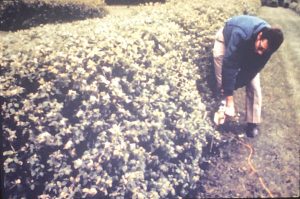5 Minnesota Landscape Arboretum Hedge Care and Maintenance
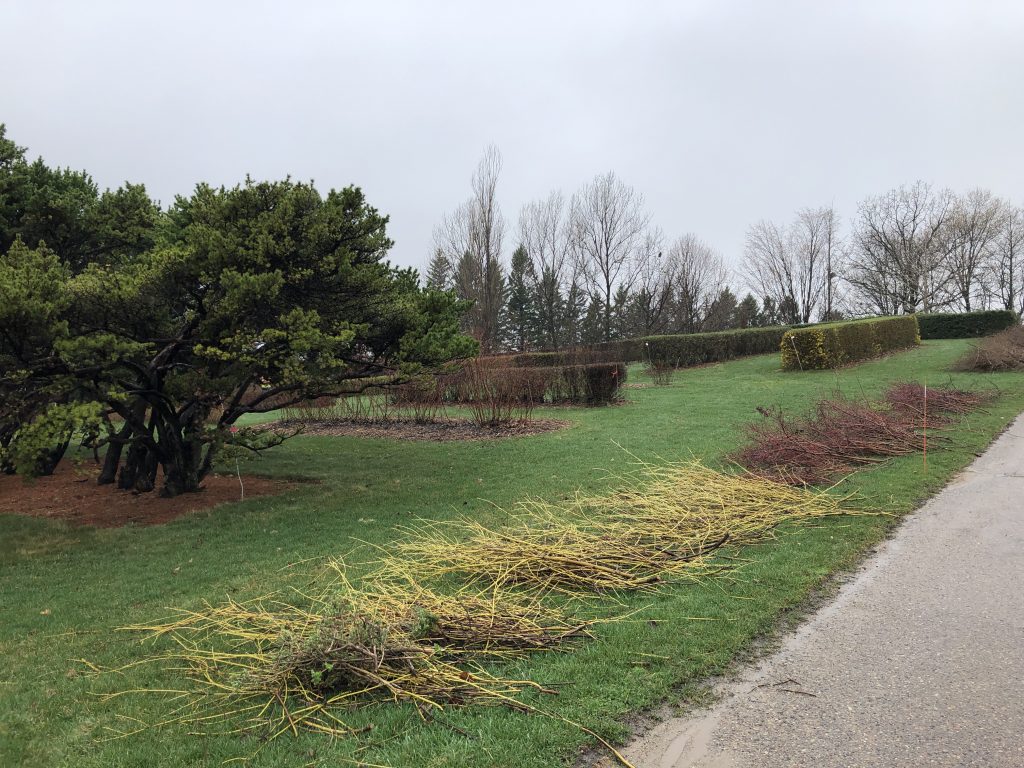
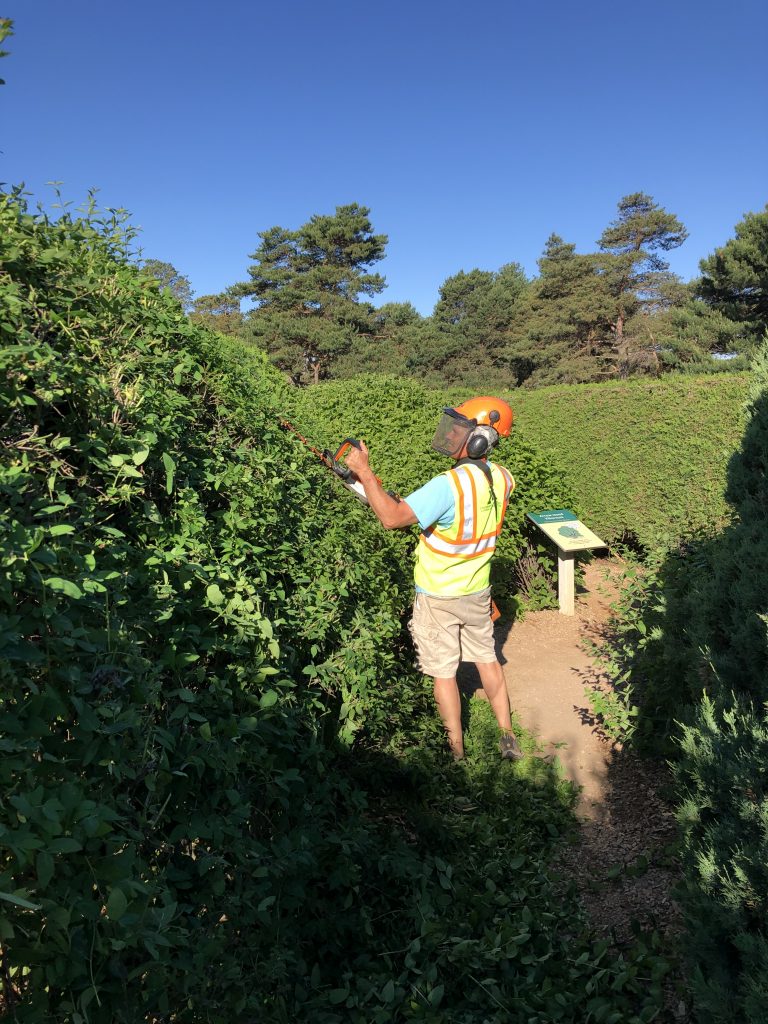
Darwin Pellett has been caring for the MLA Hedge Display since 2000. He tries to maintain the natural height of each plant and does the first major pruning when the plants start to grow in the spring. Some plants will need pruning an additional second or even third time during the summer to maintain their uniform shape. Boxwood and slower-growing plants are often just pruned once in the summer. He cautions against cutting too much of the plant back, although this varies from species to species. Some, like honeysuckle, can be pruned much more than other plants, such as boxwood. Darwin uses a gasoline-powered hedge trimmer and replaces the blades annually to achieve a sharp cut. Today, he notes there are good battery-powered trimmers much improved from a few years ago.
The Arboretum soil is slightly alkaline and high in phosphorus and potassium, so the hedges do not need much additional fertilizer. The turfgrass or lawn in the hedge display does receive an annual fall fertilization, of which some is no doubt used by the hedges. If the turf gets dry the area is watered, and any new hedge is watered until established, but overall the hedge display is not watered unless it is so dry the turfgrass is turning brown. Pest control is minimal, primarily for occasional plant bugs on the ninebark.
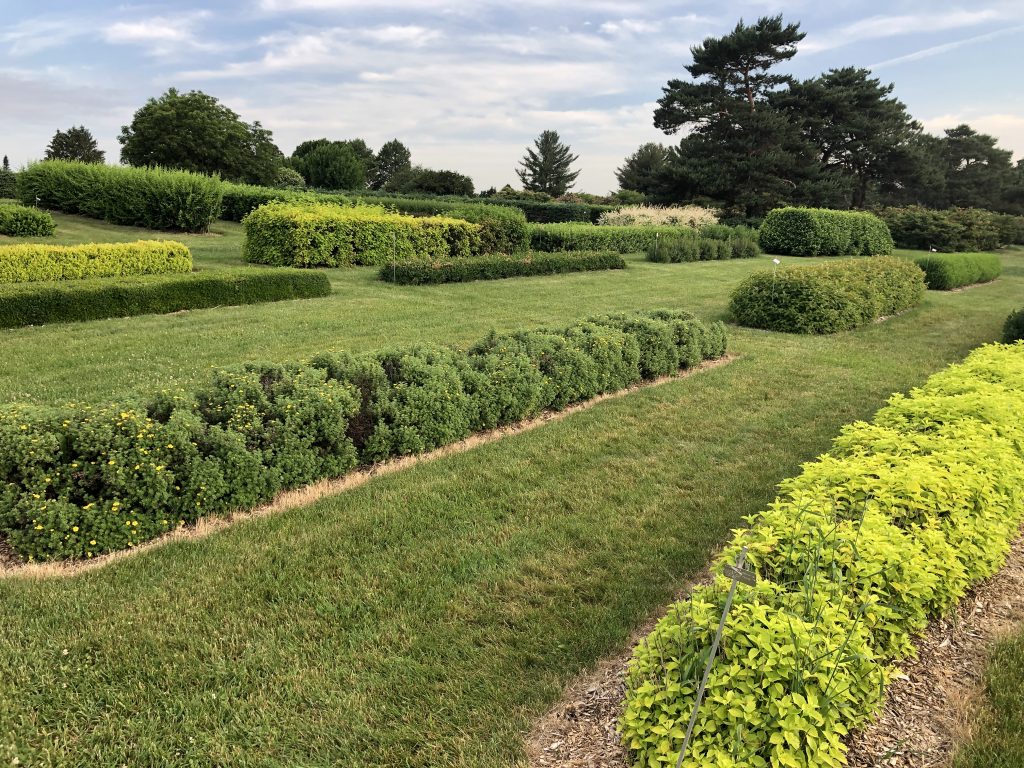
Each hedge is mulched with wood chips at the base to keep weeds at bay and make it easier to mow around the plants. Darwin’s favorite hedges are the colorful dogwoods and arrowwood viburnum. These are easy plants to shear into a hedge and not difficult to care for. Potentilla is his least favorite hedge, although he acknowledges this is a tough plant that can grow in a wide variety of soils and sites.
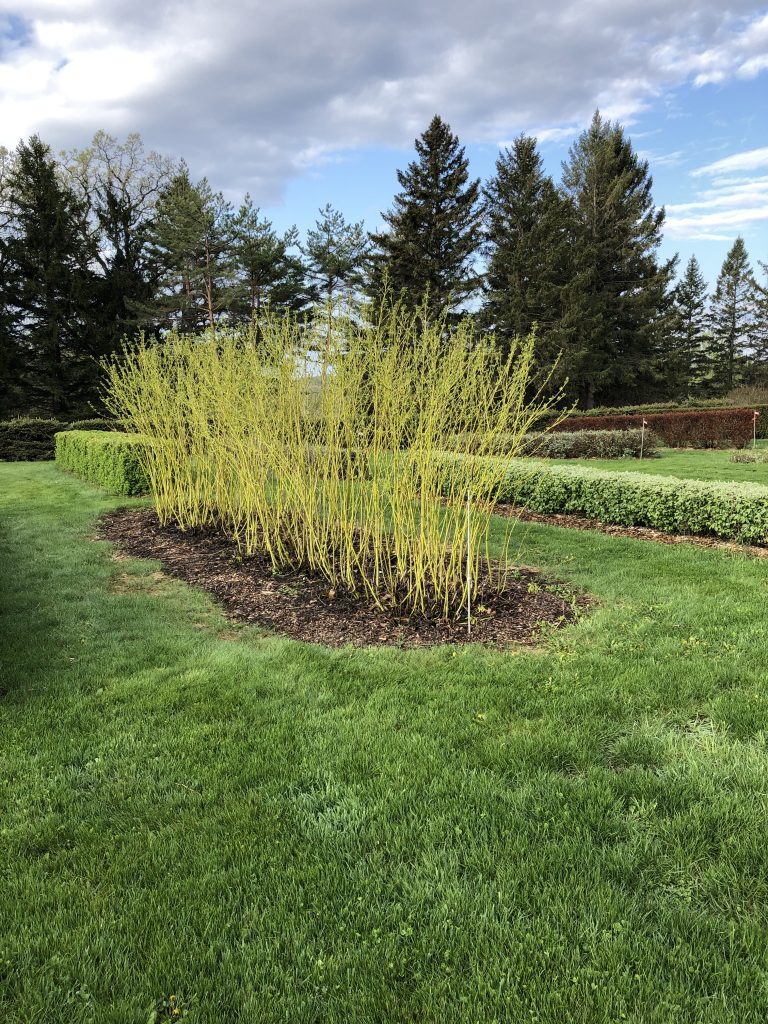
The hedge display shows how these plants look when sheared. However, three of the hedges are not formally pruned: Cornus sericea ‘Flaviramea,’ yellow twig dogwood, Cornus sericea ‘Isanti,’ red twig dogwood, and
Syringa meyeri, dwarf Korean lilac. These plants are allowed to grow naturally to show their colorful stems and flowers. Branches are thinned and deadwood is removed, but the plants are not sheared to the traditional box shape.
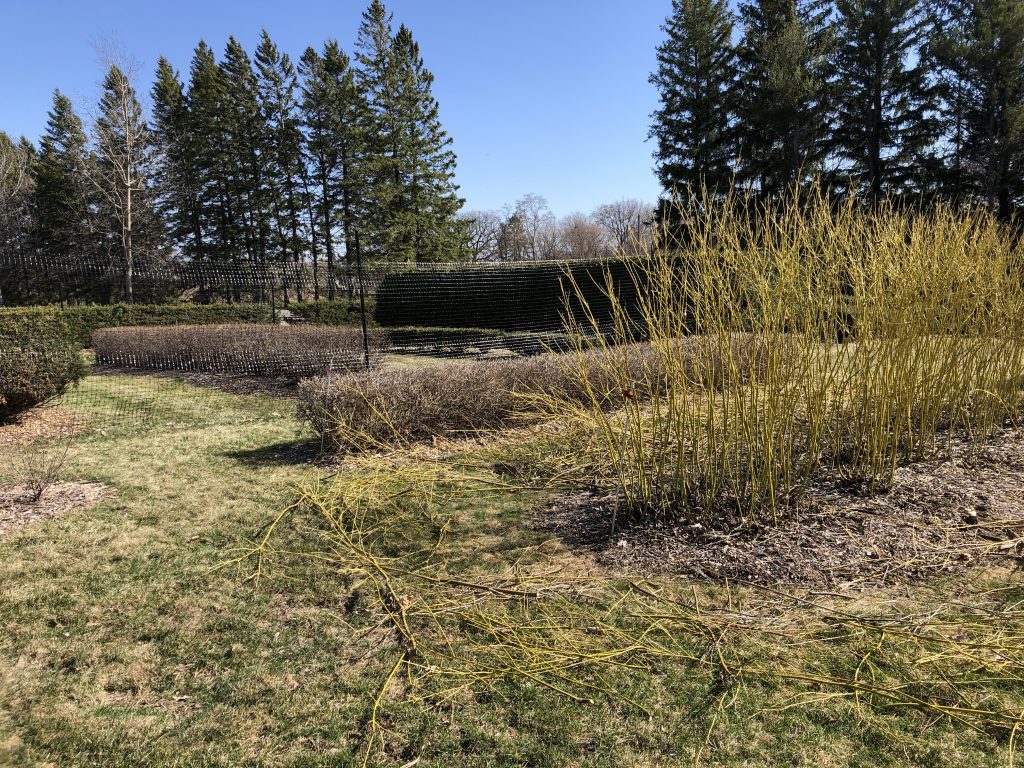
Several species of birds nest in the hedges since the dense growth provides good cover. Darwin says he sees “Lots of bird nests, song sparrows, brown thrashers, gray catbirds, and several mallard nests.” Rabbits do the most damage in eating the stems, especially the arborvitae. Hedges provide good winter cover for wildlife, especially with heavy snow cover and when food is scarce.
